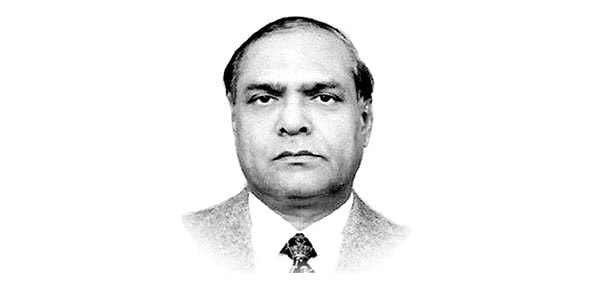Russia-Ukraine conflict
MONTHS before Russia invaded Ukraine, it has been watching its former Warsaw Pact partners joining NATO one by one.
Poland, Hungry, Latvia, Estonia, Czech Republic, Bulgaria, Slovenia and other Russian allies left Warsaw pact after the break up of U.S.S.R and joined former foe NATO.
Formally known as the Treaty of Friendship, Co-operation and Mutual Assistance, the Warsaw Pact was created on 14 May 1955.
It complemented the Council for Mutual Economic Assistance, which was the regional economic organisation set up by the Soviet Union in January 1949 for the communist states of Central and Eastern Europe.
The Warsaw Pact embodied what was referred to as the Eastern bloc, while NATO and its member countries represented the Western bloc.
NATO and the Warsaw Pact were ideologically opposed and, over time, built up their own defences starting an arms race that lasted throughout the Cold War.
Leaving Warsaw Pact and joining NATO of former Eastern Block countries kept Putin irritating as he never wanted to be surrounded by “enemies”.
Cajoling and meting out “blue eyed boy” treatment to Ukraine perhaps exhausted Putin’s patience and hence he unleashed the biggest war in Europe since World War Two with the justification that modern, Western-leaning Ukraine was a constant threat and Russia could not feel “safe” under these developments and threats to its existence.
His justification( which he thinks is convincing enough) paved the way for attacking Ukraine.
Thousands of people have since died, towns and cities such as Mariupol lie in ruins and 13 million people have been displaced.
But the question remain: what was it all for and how will it end? The Russian leader’s initial aim was to overrun Ukraine and depose its government, ending for good its desire to join the Western defensive alliance NATO.
After a month of failures, he abandoned his bid to capture the capital Kyiv and turned his ambitions to Ukraine’s east and south.
Launching the invasion on 24 February he told the Russian people that his goal was to “demilitarise and de-Nazify Ukraine”.
His declared aim was to protect people subjected to what he called eight years of bullying and genocide by Ukraine’s government.
Another objective was soon added: ensuring Ukraine’s neutral status . Foreign Minister Sergei Lavrov spoke of freeing Ukraine from oppression while foreign intelligence chief Sergei Naryshkin argued that “Russia’s future and its future place in the world are at stake”.
Ukraine’s President, Volodymyr Zelensky, said “the enemy has designated me as target number one; my family is target number two”.
His adviser said Russian troops made two attempts to storm the presidential compound.Russian leaders refused to call it an invasion or a war.
Moscow continues to coin Europe’s biggest war since 1945 as a “special military operation”. After a month into the invasion, Russia pulled back from Kyiv and declared its main goal was the “liberation of Donbas” – broadly referring to Ukraine’s eastern regions of Luhansk and Donetsk.
More than a third of this area was already seized by Russian proxy forces in a war that began in 2014, now Russia wanted to conquer all of it.
The Kremlin claimed it had “generally accomplished” the aims of the invasion’s first phase, which it defined as considerably reducing Ukraine’s combat potential.
But it became clear from Russia’s withdrawal that it had scaled back its ambitions. Russian officials are now focused on seizing the two big eastern regions and creating a land corridor along the south coast, east from Crimea to the Russian border.
They have claimed control of the southern region of Kherson and a leading Russian general has said they have hopes of seizing territory further west along the Black Sea coast towards Odesa and beyond.
“Control over the south of Ukraine is another way out to Transnistria,”said Maj Gen Rustam Minnekayev, referring to a breakaway area of Moldova, where Russia has some 1,500 troops.
If Russia does capture both eastern regions, it will most likely try to annexe them as it did with Crimea in 2014.
Ukraine also accuses occupying forces in Kherson of planning a referendum on creating separatist entity: they have already introduced Russia’s currency, the Rouble, from 1 May.
Capturing Donbas and the land corridor is a mandatory minimum for the Kremlin.
The powerful head of Russia’s security council, Nikolai Patrushev, has spoken of Ukraine disintegrating into “several states”, blaming Ukrainian and Western hatred of Russia.
The question is whether Russian forces have the numbers to press forward. By not declaring this a war, the Kremlin cannot mobilise nationally and military analyst Michael Kofman believes that unless that happens ,Russia’s Donbas offensive is the last it can attempt.
Since Ukraine achieved independence in 1991, as the Soviet Union collapsed, it has gradually looked to the West – both the EU and Nato.
Russia’s leader has sought to reverse that, seeing the fall of the Soviet Union as the “disintegration of historical Russia”.
He has claimed Russians and Ukrainians are one people, denying Ukraine its long history and seeing today’s independent state merely as an “anti-Russia project”.
“Ukraine never had stable traditions of genuine statehood,” he asserted. It was his pressure on Ukraine’s pro-Russian leader, Viktor Yanukovych, not to sign a deal with the European Union in 2013 that led to protests that ultimately ousted the Ukrainian president in February 2014.
Russia then seized Ukraine’s southern region of Crimea and triggered a separatist rebellion in the east and a war that claimed 14,000 lives.
As he prepared to invade in February, he tore up an unfulfilled 2015 Minsk peace deal and accused Nato of threatening “our historic future as a nation”, claiming that Nato countries wanted to bring war to Crimea.
He has lately accused NATO of using Ukraine to wage a proxy war .against Russia.
NATO maintains it never intended to deploy combat troops on its eastern flank, until Russia annexed Crimea illegally in 2014.
—— The writer is former DG (Emigration) and consultant ILO, IOM.










